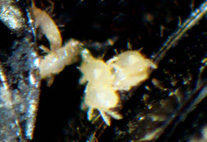Abstract
Trinomys is a genus of terrestrial spiny rats from the Atlantic Forest, and three species occur in the state of Espírito Santo, eastern Brazil: T. gratiosus, T. paratus, and T. setosus. The levels of morphological variation within and among these species are virtually unknown, and their geographic ranges have not been properly assessed. These three species are externally very similar, hampering their identification in surveys and ecological studies that are not based on voucher specimens. We evaluated 162 specimens of Trinomys spp. from eastern Brazil, especially from the state of Espírito Santo, and used data from skulls, skins, and bacula to examine morphological variation and its taxonomic implications. We found extensive morphological variation in the skins and skulls even when diagnostic characters were examined, such as the number of dental lophs and bones contributing to the postorbital process. We also found variation in bacular shape among and within species, including polymorphism among individuals from the same population. The geographic range of each species in Espírito Santo was well defined: T. setosus occurred on the left (north) bank of the Doce River, and the other two species, T. gratiosus and T. paratus, occurred on the right (south) bank of this river; however, T. gratiosus was found at altitudes above 500 m, whereas T. paratus occurred below 580 m. Despite difficulties in species identification, the results of morphological and morphometric analyses are compatible with the current classification of these three species. In addition, the level of morphological variation found in specimens identified as T. g. panema—including types—falls within the range of T. g. gratiosus, confirming the taxonomic status of the former as a junior synonym of the latter.

